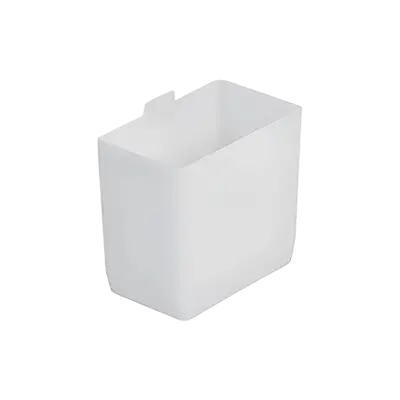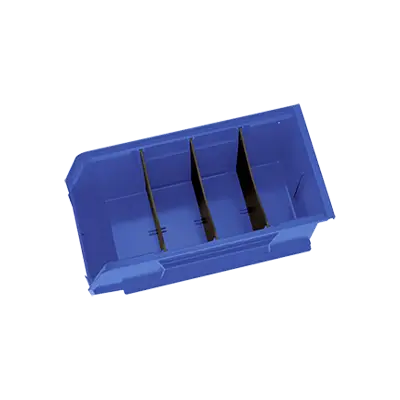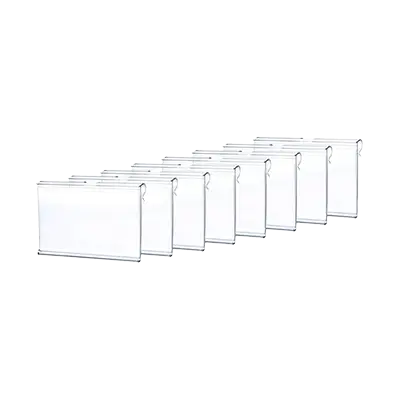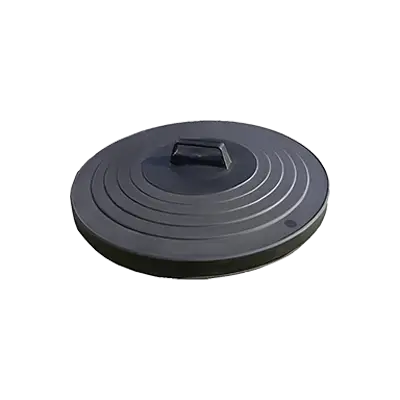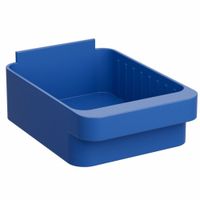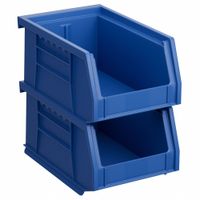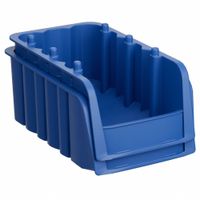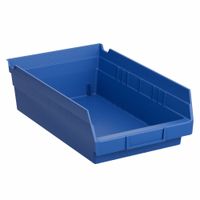Call +(254) 703 030 000 / 751 483 999 / 721 704 777
.....Read More
Frequently Asked Questions
What are the benefits of using stacking bins for storage?
Stacking bins offer several benefits for storage:
1. **Space Efficiency**: Stacking bins maximize vertical space, allowing for more efficient use of storage areas. This is particularly beneficial in small spaces or warehouses where floor space is limited.
2. **Organization**: They help in organizing items systematically. Different bins can be used for different categories, making it easier to locate and access items quickly.
3. **Versatility**: Available in various sizes and materials, stacking bins can accommodate a wide range of items, from small parts to larger goods, making them suitable for diverse storage needs.
4. **Durability**: Made from robust materials like plastic or metal, stacking bins are designed to withstand heavy loads and harsh conditions, ensuring long-term use without frequent replacements.
5. **Mobility**: Many stacking bins are designed to be easily moved, often featuring handles or being compatible with dollies and carts, facilitating easy transportation of goods.
6. **Visibility**: Clear or open-front bins allow for easy visibility of contents, reducing the time spent searching for items and improving inventory management.
7. **Cost-Effective**: By optimizing space and improving organization, stacking bins can reduce the need for additional storage solutions, leading to cost savings.
8. **Safety**: Properly stacked bins reduce clutter and potential hazards in storage areas, contributing to a safer working environment.
9. **Scalability**: As storage needs grow, additional bins can be easily integrated into the existing system, providing a scalable solution.
10. **Protection**: They protect contents from dust, moisture, and damage, ensuring items remain in good condition.
Overall, stacking bins enhance storage efficiency, organization, and safety, making them a valuable asset in both personal and professional settings.
How do hanging bins attach to louvered panels or rails?
Hanging bins attach to louvered panels or rails using a simple yet effective design that involves a lip or hook mechanism. Each bin typically has a molded lip or hook at the back, which is designed to fit securely over the horizontal slats or rails of the louvered panel.
1. **Louvered Panels**: These panels have a series of horizontal slats or ridges. The bins are designed with a rear lip that hooks over these slats. The lip is angled to ensure that the bin hangs securely and does not easily dislodge. The weight of the contents in the bin helps to keep it stable and in place.
2. **Rails**: When using rails, the bins have a similar hook or lip mechanism. The rail system usually consists of a horizontal bar or track. The bins hook onto these rails, allowing them to slide or be repositioned easily along the rail. This system provides flexibility in organizing and accessing stored items.
3. **Installation**: To attach a bin, you simply align the lip or hook with the desired slat or rail and lower the bin until it clicks or rests securely in place. The design ensures that the bins can be easily removed or repositioned without tools, allowing for quick reorganization.
4. **Material and Design**: The bins and panels are often made from durable plastic or metal, ensuring they can support the weight of stored items. The design is standardized to fit various panel and rail systems, providing versatility in different storage environments.
This system is widely used in workshops, garages, and warehouses for efficient storage and organization.
What materials are commonly used to make storage bins?
Storage bins are commonly made from a variety of materials, each offering distinct advantages depending on the intended use.
1. **Plastic**: One of the most popular materials, plastic storage bins are lightweight, durable, and resistant to moisture and pests. They are often made from polypropylene or polyethylene, which are both strong and flexible. These bins are available in various sizes and colors, making them versatile for both home and industrial use.
2. **Metal**: Metal storage bins, typically made from steel or aluminum, are known for their strength and durability. They are ideal for heavy-duty storage needs, such as in warehouses or workshops. Metal bins can withstand high temperatures and are resistant to impact, making them suitable for storing tools and heavy equipment.
3. **Wood**: Wooden storage bins offer a more aesthetic and natural look, often used in home decor. They are typically made from hardwoods like oak or softwoods like pine. While they provide a sturdy structure, they are not as resistant to moisture and pests as plastic or metal bins.
4. **Fabric**: Fabric storage bins are lightweight and collapsible, making them easy to store when not in use. They are often made from cotton, canvas, or polyester and are ideal for organizing clothes, toys, or other lightweight items. However, they are not suitable for heavy or sharp objects.
5. **Cardboard**: Cardboard bins are inexpensive and recyclable, making them an eco-friendly option for temporary storage. They are commonly used for moving or storing lightweight items but are not durable enough for long-term use or exposure to moisture.
6. **Glass**: Less common, glass storage bins are used for specific purposes, such as storing food items. They are non-porous and do not absorb odors, but they are fragile and heavy compared to other materials.
How do nesting bins save space when not in use?
Nesting bins save space when not in use by allowing one bin to fit inside another, effectively reducing the overall volume they occupy. This design is achieved by tapering the sides of the bins, so the top opening is wider than the base. When bins are not needed for storage or transport, they can be stacked inside each other, minimizing the footprint they require. This is particularly beneficial in environments where storage space is limited, such as in warehouses, retail settings, or during transportation.
The space-saving advantage of nesting bins is significant because it allows for more efficient use of storage areas. When bins are nested, the vertical space they occupy is reduced, freeing up room for other items or activities. This can lead to cost savings, as less storage space is needed, and it can also improve the organization and accessibility of a storage area.
Additionally, nesting bins are often designed to be lightweight and easy to handle, which further enhances their practicality. They can be quickly nested and un-nested, allowing for rapid deployment when needed and efficient storage when not. This flexibility makes them ideal for dynamic environments where storage needs frequently change.
Overall, the ability of nesting bins to compactly store within each other when not in use is a simple yet effective solution to space management challenges, providing both economic and operational benefits.
What types of items are best stored in shelf bins?
Shelf bins are ideal for organizing and storing a variety of small to medium-sized items. They are particularly useful for:
1. **Hardware and Tools**: Nuts, bolts, screws, nails, and small hand tools can be efficiently organized in shelf bins, making them easy to access and inventory.
2. **Office Supplies**: Items like pens, paper clips, sticky notes, and other stationery can be neatly stored, reducing clutter on desks and improving workspace organization.
3. **Craft and Hobby Materials**: Beads, buttons, threads, and other small craft supplies can be sorted by type or color, facilitating creativity and project management.
4. **Medical Supplies**: Bandages, syringes, gloves, and other small medical items can be stored in a clean and organized manner, ensuring quick access in healthcare settings.
5. **Retail and Inventory Items**: Small merchandise like cosmetics, electronics accessories, and packaged snacks can be displayed and stored efficiently, aiding in stock management and customer browsing.
6. **Household Items**: Batteries, light bulbs, and small kitchen gadgets can be organized in shelf bins, helping maintain order in utility rooms and kitchens.
7. **Electronic Components**: Resistors, capacitors, and other small electronic parts can be sorted and stored, essential for workshops and repair centers.
8. **Personal Items**: Jewelry, keys, and other personal effects can be kept organized, reducing the likelihood of misplacement.
9. **Educational Materials**: Classroom supplies like markers, erasers, and flashcards can be stored for easy access by teachers and students.
10. **Garage and Automotive Supplies**: Small car parts, cleaning supplies, and tools can be organized, making maintenance tasks more efficient.
Shelf bins help maximize space, improve organization, and enhance accessibility, making them a versatile storage solution across various environments.
How do tip-out bins function and what are their advantages?
Tip-out bins are storage solutions designed to organize and access small parts or items efficiently. They consist of a series of compartments or bins that are mounted on a frame or panel. Each bin is hinged at the bottom, allowing it to tip forward when pulled, providing easy access to its contents without removing the bin from the frame.
Function:
1. **Design**: Tip-out bins are typically made of durable plastic and are transparent or semi-transparent, allowing visibility of contents.
2. **Mechanism**: The bins are attached to a frame with a hinge mechanism at the bottom. When a bin is pulled, it tips forward, creating an angle that makes it easy to reach inside.
3. **Repositioning**: After accessing the contents, the bin can be pushed back into place, where it locks securely to prevent accidental tipping.
Advantages:
1. **Space Efficiency**: Tip-out bins maximize vertical space, making them ideal for areas with limited floor space.
2. **Organization**: They help in categorizing and storing small items like screws, nuts, or craft supplies, reducing clutter.
3. **Accessibility**: The tipping mechanism allows quick and easy access to contents without the need to remove the bin.
4. **Visibility**: Transparent bins provide clear visibility of contents, facilitating quick identification and retrieval.
5. **Durability**: Made from robust materials, they withstand frequent use and are resistant to damage.
6. **Versatility**: Available in various sizes and configurations, they can be customized to fit different storage needs.
7. **Safety**: The secure locking mechanism prevents accidental spills, maintaining a tidy workspace.
8. **Ease of Installation**: They can be easily mounted on walls, cabinets, or workbenches, offering flexible installation options.
Overall, tip-out bins are practical, efficient, and versatile storage solutions for both commercial and residential settings.
What are the ideal uses for giant hopper bins?
Giant hopper bins are ideal for several applications across various industries due to their large capacity and efficient material handling capabilities.
1. **Agriculture**: They are extensively used for storing and dispensing bulk grains, seeds, and animal feed. Their design allows for easy loading and unloading, minimizing labor and time.
2. **Construction**: In construction, hopper bins are used for storing and dispensing bulk materials like sand, gravel, and cement. Their ability to handle large volumes makes them essential for large-scale projects.
3. **Manufacturing**: In manufacturing, especially in the food and chemical industries, hopper bins store raw materials and ingredients. They ensure a continuous supply to production lines, enhancing efficiency.
4. **Mining**: Hopper bins are used to store and manage bulk minerals and ores. Their robust construction can handle heavy and abrasive materials, making them suitable for harsh mining environments.
5. **Recycling and Waste Management**: They are used to collect and sort recyclable materials or waste. Their large capacity and easy discharge system make them efficient for managing high volumes of materials.
6. **Pharmaceuticals**: In the pharmaceutical industry, hopper bins are used for storing and dispensing powders and granules. They ensure contamination-free handling and precise dispensing.
7. **Food Processing**: Hopper bins are used to store and manage bulk food ingredients, ensuring a steady supply to processing lines. They help maintain hygiene and prevent contamination.
8. **Chemical Processing**: In chemical industries, they store and dispense bulk chemicals, ensuring safe and efficient handling of potentially hazardous materials.
Overall, giant hopper bins are essential for any industry that requires efficient bulk material storage and handling, providing benefits like reduced labor costs, increased efficiency, and improved safety.
